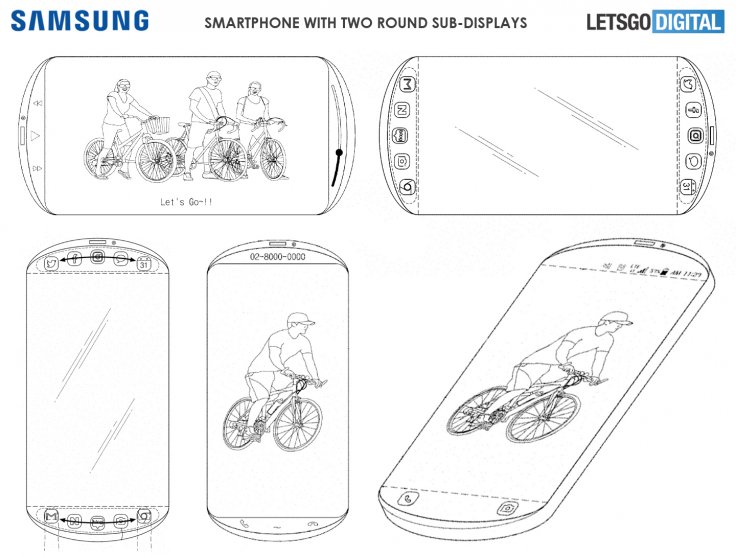It's pretty obvious that Samsung is an innovative smartphone maker. The Korean tech giant has given us some really interesting smartphones over the ages - the likes of the Samsung Galaxy Note, for example, the Galaxy S6 Edge with the curved AMOLED display and most recently the world's first foldable smartphone in the form of the Samsung Galaxy Fold and the upcoming Galaxy Z Flip clamshell foldable smartphone.
Now, a new Samsung patent gives us an insight into what Samsung might be thinking of after having conquered every possible smartphone form factor so far.
Samsung patent for rounded smartphone with three screens

The patent courtesy of LetsGoDigital reveals a smartphone design where the upper and lower edges of the phone are rounded, which isn't all that surprising at all since we have seen such phones in the past -- think of the Sony Ericsson Xperia Arc. The interesting bit, though, is that the smartphone has three screens, two of which are in the rounded arc on the top and bottom and the main display is at the centre.
LetsGoDigital created renders based on the patent filed in 2019 by Samsung with the United States Patent and Trademark Office (USPTO) which validated the patent on January 23, 2020. Samsung has also deposited the patent to the World Intellectual Property Organisation (WIPO) as well.
As we can see from the renders, the front of the phone has an all-screen design with the upper and lower edges in the shape of an arc and the touch screen is arched at the top and bottom, with the sides remaining straight.
Sony Xperia Arc with a modern twist?

The design is pretty reminiscent of the Sony Ericsson Xperia Arc and Xperia Neo, but with a modern twist. In this case, the top and bottom have displays instead of the speaker grille and the physical buttons on the Sony Ericsson phones from back in the day. The top and bottom displays on the Samsung patent design display virtual buttons that adapt as needed. The arched displays can also show app icons as well.
Smartphone form factors have remained unchanged
The concept of a rounded smartphone seems like a welcome change in the smartphone world where every smartphone seems to have the same old rectangular design. The rectangular form factor has become a sort of norm in the smartphone world ever since the iPhone launched and manufacturers have done very little to change the form factor.
Although, there have been some unsuccessful attempts in the past with square or elongated formats such as the 21:9 aspect ratio formats on the recent Sony Xperia 1 and Motorola One Vision. However, thanks to the advent of foldable screens we are seeing some new possibilities and revisions in smartphone design, of which the recent Motorola Razr and the upcoming Samsung Galaxy Z Flip foldable clamshells are a good example.
How is such a design possible?
The new patent design from Samsung is pretty interesting for how the company has managed to achieve an unusual all-screen design. However, according to the article published by LetsGoDigital (in Dutch), Samsung seems to have glued together three separate displays. The centre display is the usual rectangular display that we see on other phones but the top and bottom are two separate rounded or arched screens.
These three screens work together but do not have the same function, kind of like the second screen on the LG V20, which was located at the top right and displayed only the phones status and notifications. Likewise, the main central display offers the classic functionality while the other two screens display notifications, virtual keys and context-based shortcuts based on the application that is being used.
The idea sure seems quite interesting but it has to be seen whether Samsung will use it on an upcoming phone.









